Growing grapes for more than forty years on land that was planted to fruit trees by Oregon Trail pioneer Thomas Cox in the 1840s, we focus on Pinot Noir and Pinot Gris with micro plantings of Chardonnay, Muscat, and Gewürztraminer.
An eternal optimist with an eye for detail, Rod has an entrepreneurial spirit that drives him to create value for customers through honest, hard work. He has worked in farming communities across Oregon and the country for more than 35 years. His love for wine from vine to bottle is only out-shined by his passion for connecting with people. He seeks adventure and loves to travel, especially to places that make great wine, from Argentina to Italy and Walla Walla to the Willamette Valley, he loves to share a bottle of wine and stories with friends old and new.
Self-described chemistry geek meets farmer, Drew sets out to capture the place from which grapes are grown. From the slopes to the soil to the season, Drew’s obsessive attention to detail, wicked knowledge, and focused experience enable him to craft wines through learned instinct which led him to be named one of Wine Enthusiast’s cutting-edge winemakers in 2019.
His resume includes stints at top Oregon wineries Domaine Serene and Shea Wine Cellars and he also has his own wine label, Harper Voit, with a tasting room in McMinnville.
We could not be more thrilled to work with Drew in crafting cutting-edge, small-batch wines from our Ankeny estate vineyard for years to come!
1980
Self-proclaimed education junkie, Joe Olexa founded Ankeny Vineyard in 1980 after completing four college degrees and just as he started his career working for the state of Oregon, which included stints in the Attorney General’s office, the Oregon Supreme Court, and the Executive Branch. His passion for gardening and farming led him to cultivate the beautiful estate we enjoy now. Joe fell in love with the pioneer heritage of our homestead property where he continues to live today.
1848
Wiry and energetic, Thomas Cox was small in stature, very perceptive, and an astute businessman who set out on the six month trek from Missouri on the Oregon Trail. He left in the spring of 1847 with his wife Martha at age 55, along with their son and daughters’ families, and dozens of wagons full of goods. Upon arrival in the fertile Willamette Valley, Tom built the very first merchant store in Salem on the corner of Commercial and Ferry streets in 1848. He purchased William Helm’s Donation Land Claim #762 which was for 321 acres in the Ankeny hills, and includes where our estate currently sits today. Tom established apple, pear, and peach orchards on the farmland and developed a peach variety he called Cox’s Golden Cling, which was popular in Western Oregon through the 1930s. We still have one pear tree on the estate, 9.5 feet in circumference, from that planting more than 150 years ago! Tom Cox and his family are buried in the Pioneer Cemetery, also known as Cox Cemetery, which is located above the vineyard in a one acre clearing of timberland.
The Santiam Band of the Kalapuya Native American tribe lived freely on this land, with men hunting and fishing along the Willamette River just one mile south of our location, and women gathering nuts, berries, and the bulb of the camas lily in the fertile Willamette Valley all around us. By the time Oregon Trail settlers like Thomas Cox arrived, there were an estimated 600 living Kalapuyans after epidemics of malaria, smallpox, and other diseases from Euro-Americans decimated the population. In 1843, the Provisional Government parceled off land in 320 acre blocks to white settlers in the most robust land act in history. Most Kalapuya descendants are now part of the Confederated Tribes of the Grand Ronde.
Our 50 acre estate is less than one mile from the Willamette River, not far from where the Santiam River merges with it. Looking south, you will see the Ankeny National Wildlife Refuge where thousands of migratory waterfowl enjoy the farmland, riparian forests, and seasonal wetlands.
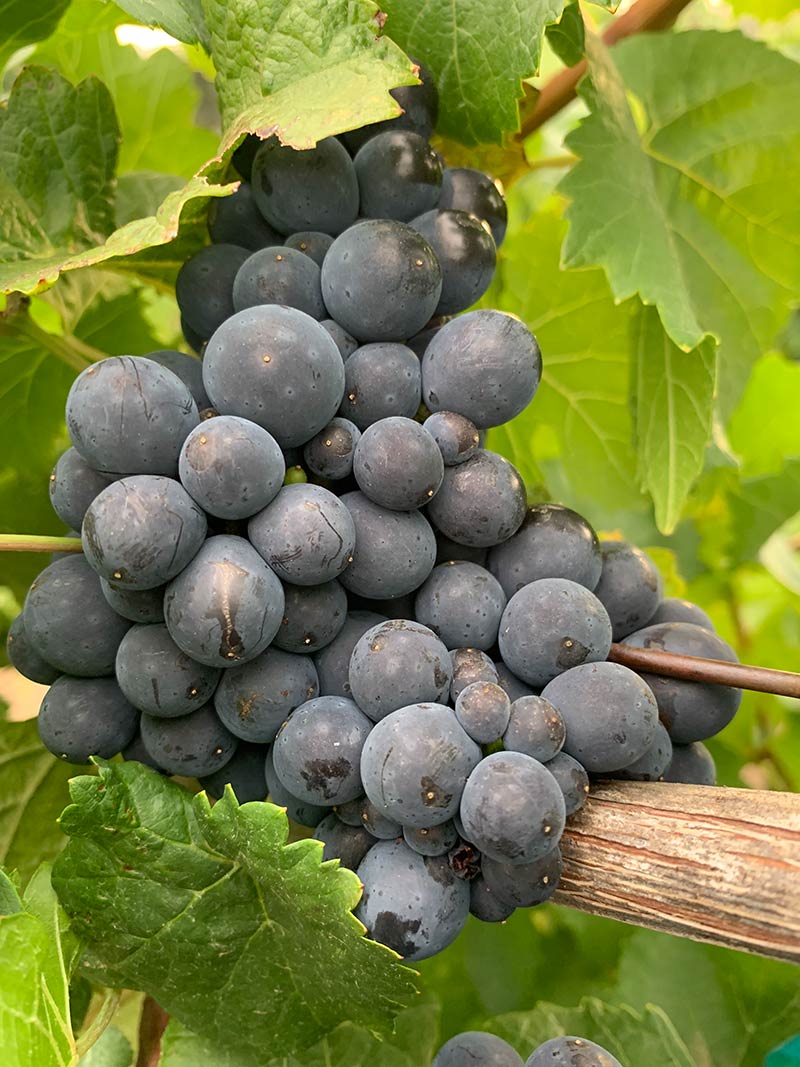

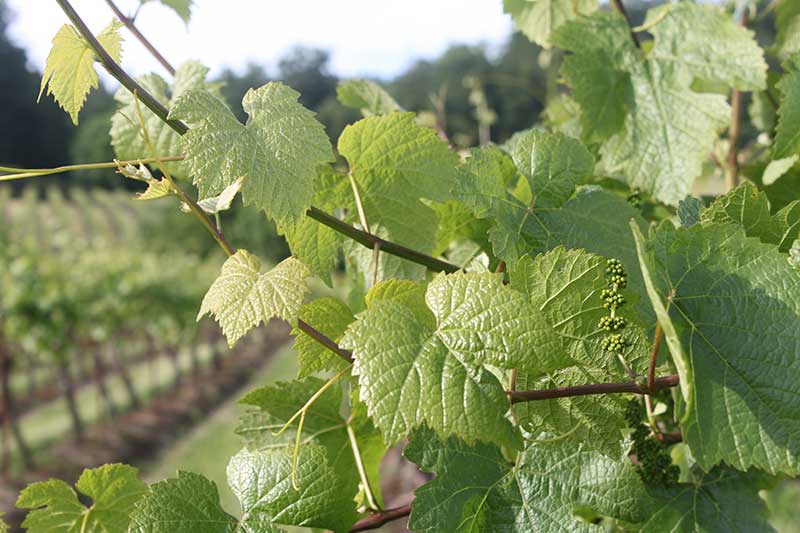

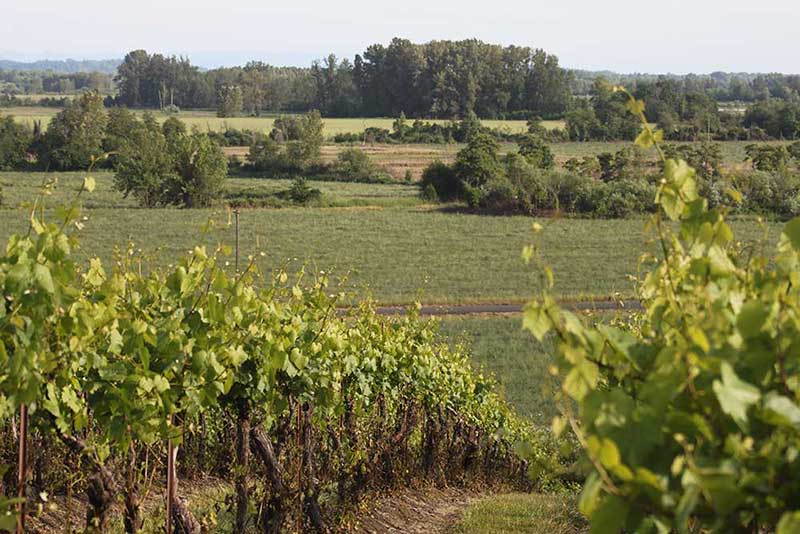
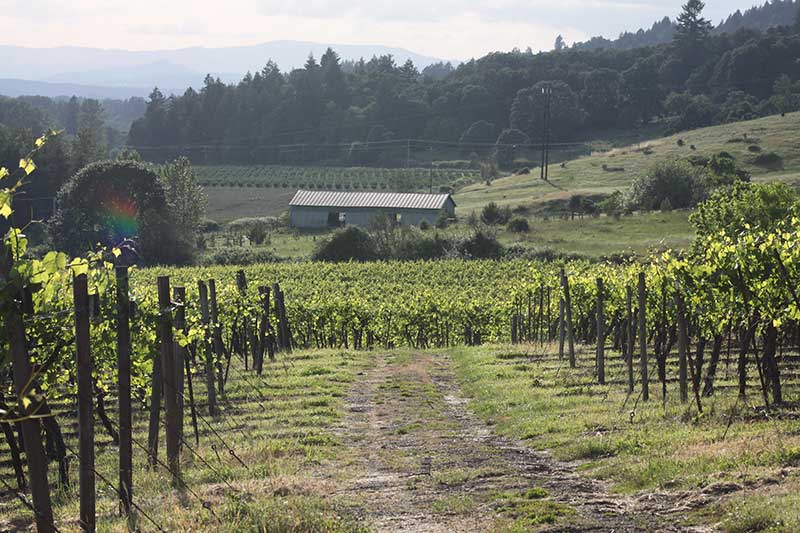
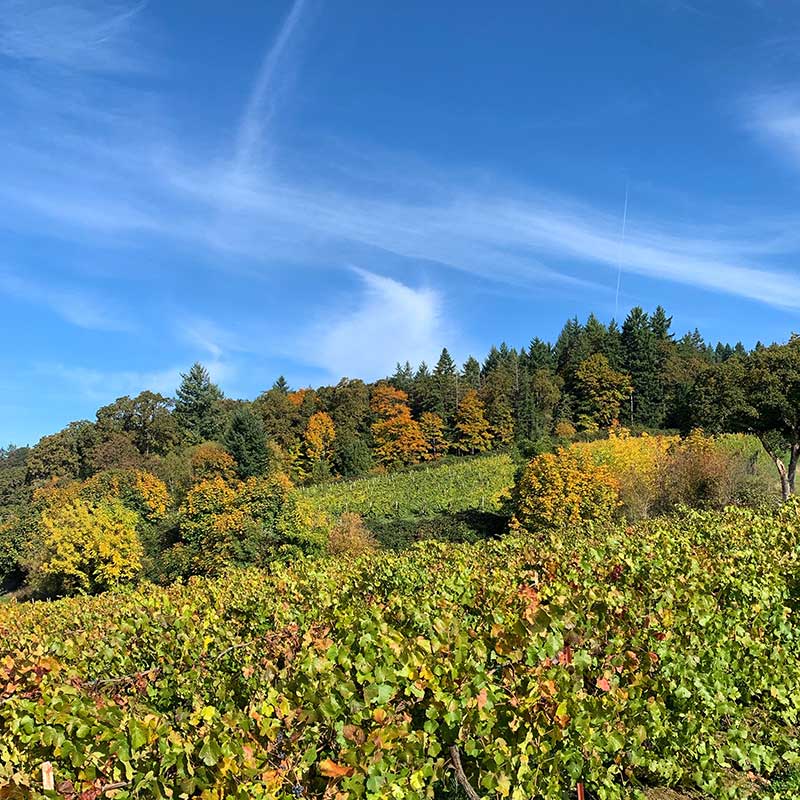

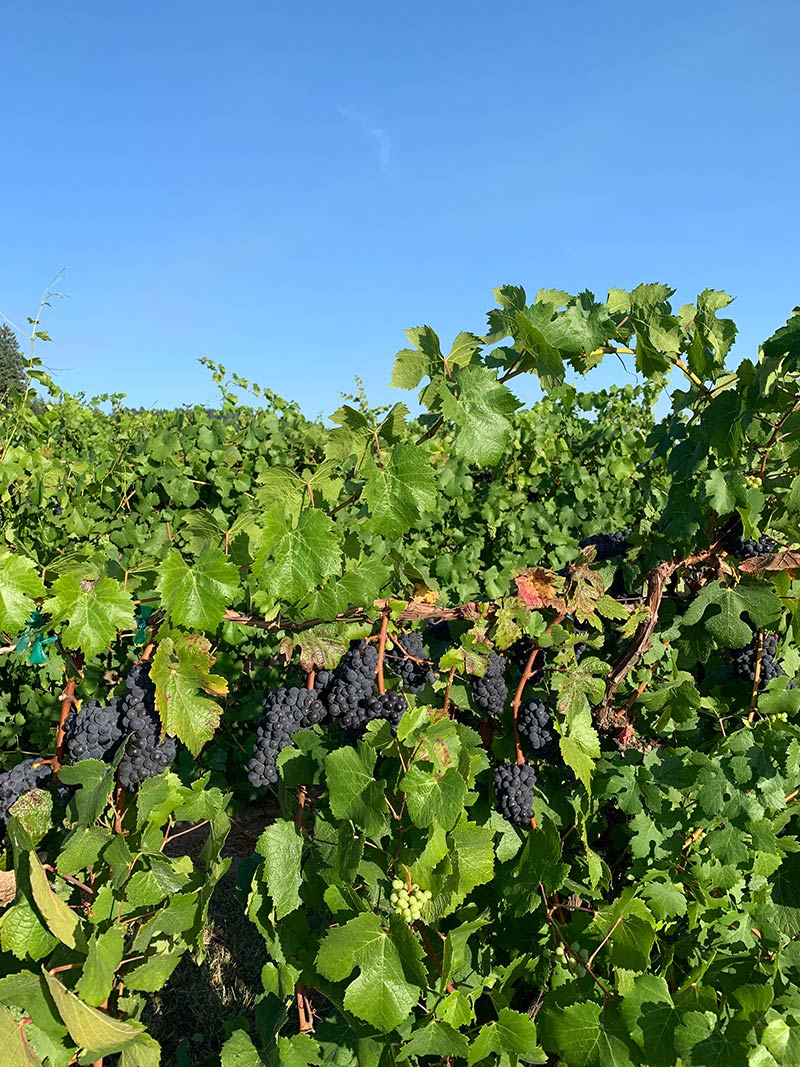

We’re growing grapes on a mix of soil types: volcanic Nekia, loamy Witzel, marine sediment Hazelair, and glacial deposited Steiwer. Our vineyards are at 225-350 feet elevation on a gentle slope in the Willamette Valley. These moderately deep, well draining soils are where the journey of vine to bottle begins.
A majority of our estate is Pinot Noir grapes, including clones of Dijon 114, 115, Pommard, and Wädenswil. The first planting of grapes was in 1982, with the first commercial harvest happening in 1985. Our Pinot Gris, Chardonnay, and Gewürztraminer grapes were planted in 1994 and our Muscat grapes were planted in 2005.